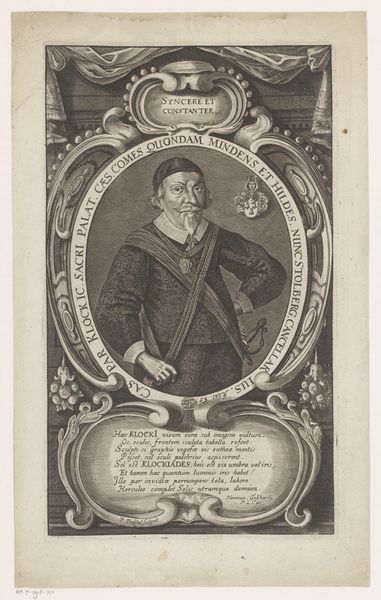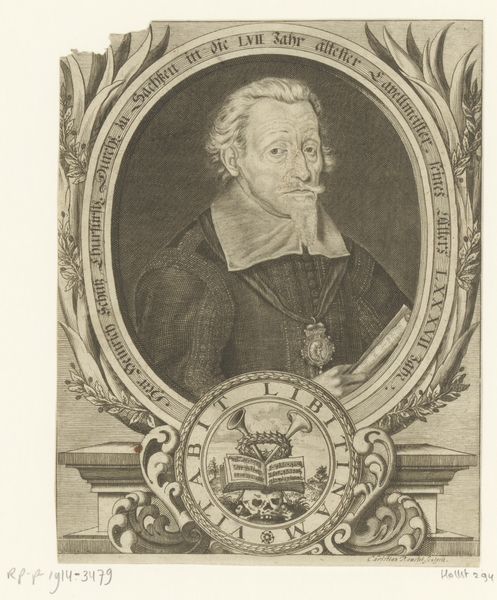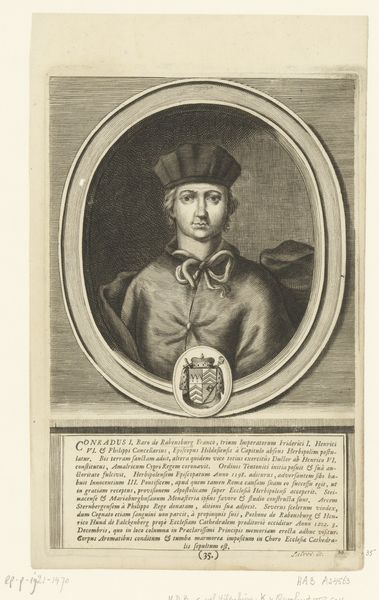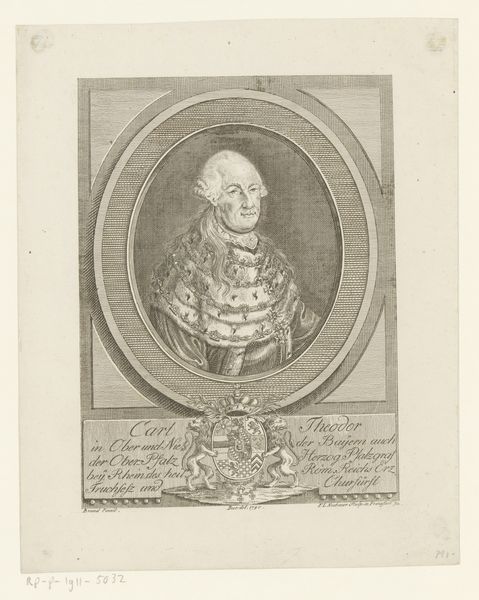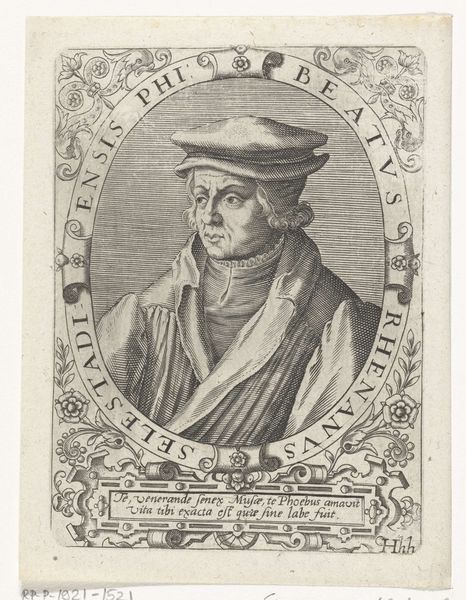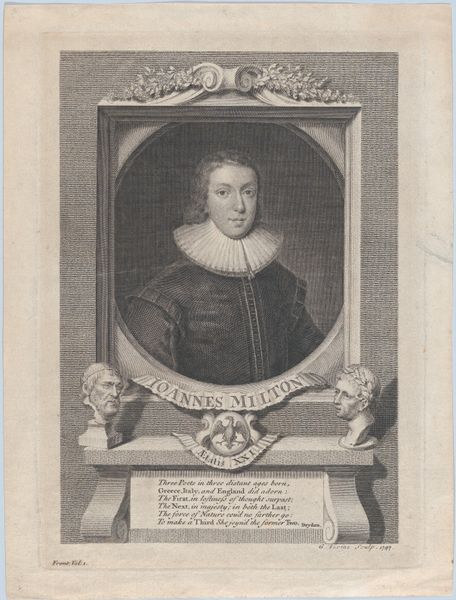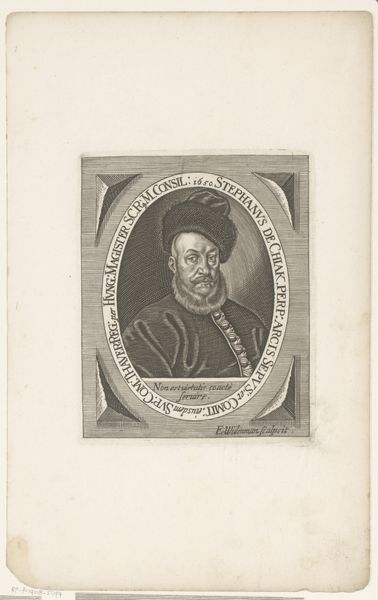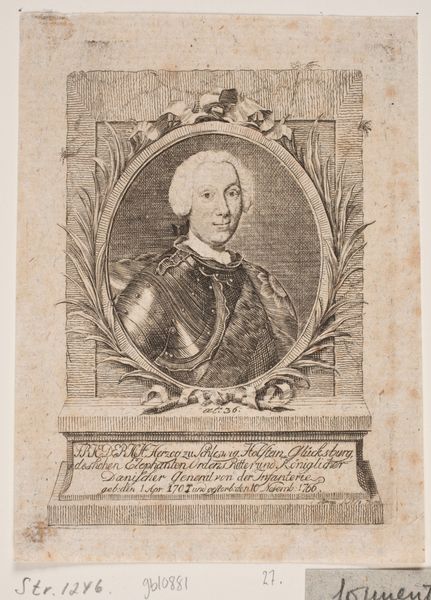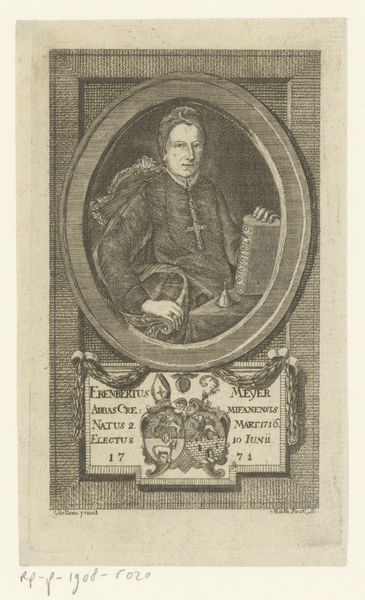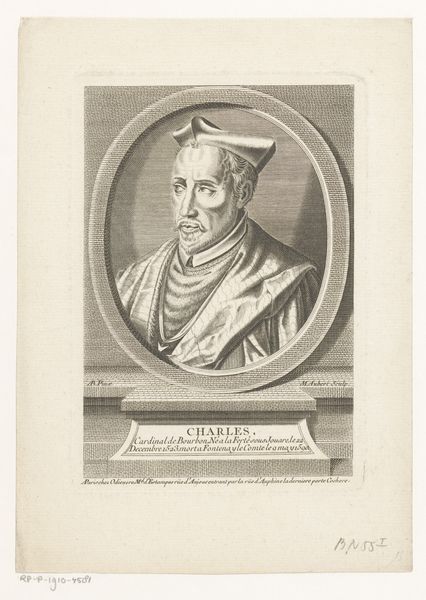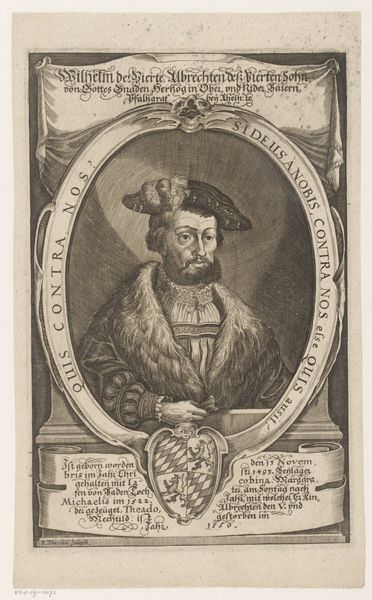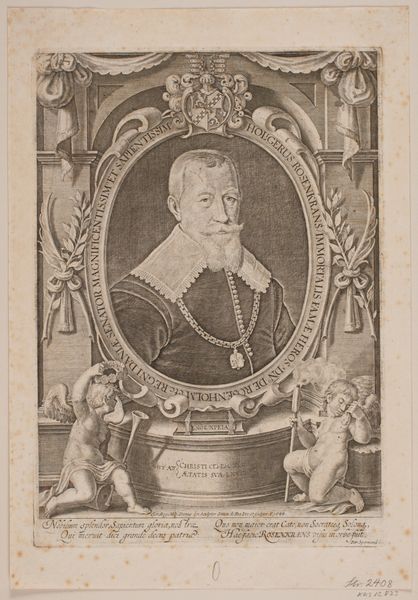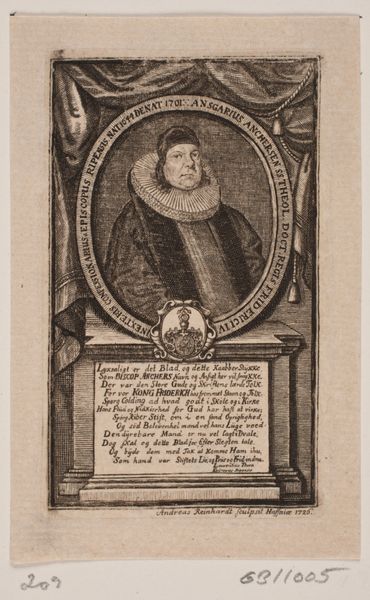
print, engraving
#
portrait
#
baroque
# print
#
figuration
#
line
#
history-painting
#
engraving
Dimensions: height 272 mm, width 184 mm
Copyright: Rijks Museum: Open Domain
Curator: Here we have "Portret van Franz, Herzog von Braunschweig-Lüneburg" – a Baroque engraving rendered after 1630 by Peter Troschel. It’s a fairly typical example of historical portraiture from that era. Editor: My initial reaction? A study in restraint. The lines are so meticulous, controlled. It feels like a conscious decision to suppress emotion, almost a deliberate coldness in rendering the Duke's visage. Curator: Baroque portraiture often served purposes beyond simple likeness. It's about presenting an image of power, legitimacy, and dynasty. The inscription reinforces the subject’s noble status. It’s carefully framed with ornate flourishes to impress the viewer. Editor: Structurally, I notice the dominance of the oval frame, which creates a focal point drawing your eyes immediately to his face. The artist then uses intricate lines to render detail – especially in his garb. Notice how Troschel employs varied hatching techniques to build up subtle shadows that delineate form? The textures come alive despite the absence of color. Curator: Right, this engraving's precise lines emphasize his social position. Look closely at the crest. And that careful Latin inscription! Consider how the history it encodes contributed to his projected persona. It’s all very intentional, reinforcing hereditary authority during a time of religious conflict, as the inscriptions attest to familial religious and political circumstances. Editor: Still, there's a tension. The overall effect is stiff, a quality inherent to the limitations of printmaking from this period perhaps. But I see it also mirroring a conscious choice of composure; even if unintentional, it now reads like emotional armor. This work highlights the contrast between rigid societal expectation and individual subjectivity. Curator: I agree. Despite the limitations of the medium, Troschel captures both the visual characteristics of Duke Franz and, equally important, his desired representation within a complicated socio-political tapestry. Editor: For me, the piece is not only a record of a man but a revealing reflection on the mechanics of image construction in that historical context. A study in how power performs visually.
Comments
No comments
Be the first to comment and join the conversation on the ultimate creative platform.
